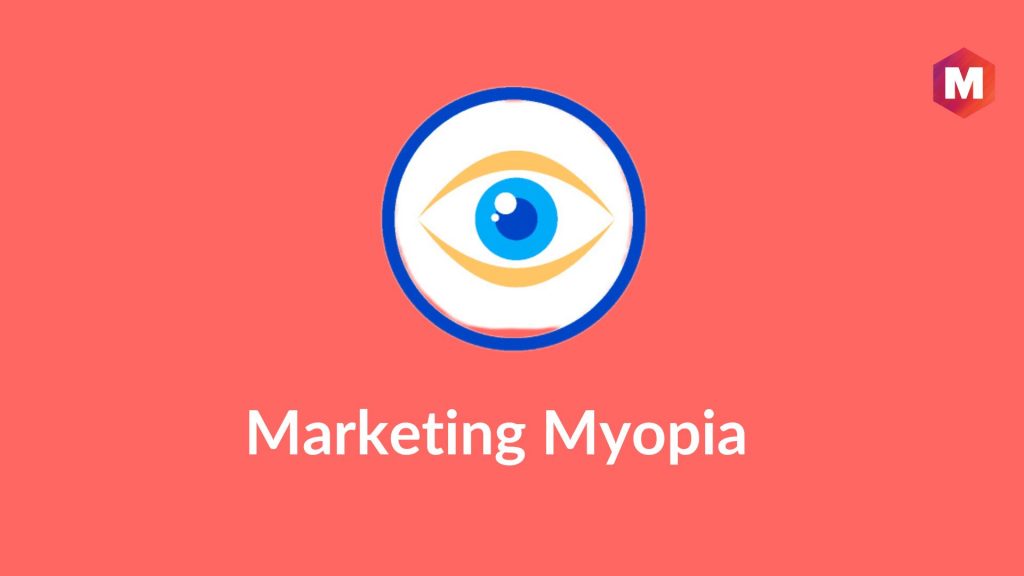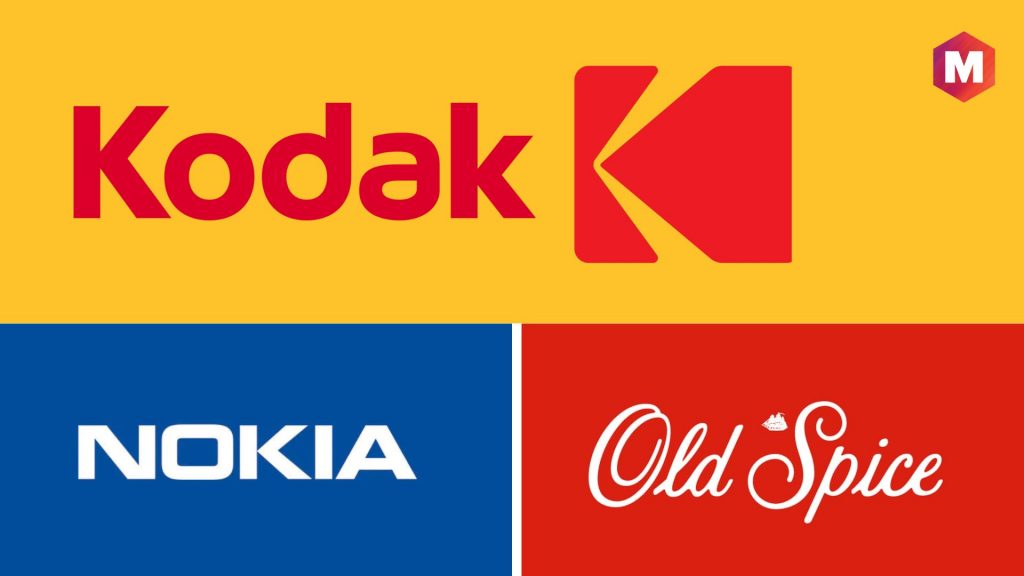Marketing myopia happens when businesses concentrate on short-term advantages over long-term objectives and client needs, risking relevance and growth. To avoid this, companies must prioritize long-term viability and consumer pleasure.
For example, a car maker should develop environmentally friendly technologies to improve next year’s model and set future industry norms.
Table of Contents
What is Marketing Myopia?
Marketing myopia is a strategic problem in which firms focus too narrowly on short-term gains rather than long-term success, ignoring the market’s considerable demands. Theodore Levitt coined the term to compare this short-sighted mentality to the inability to see far, a medical condition known as myopia.
Companies with marketing myopia risk stagnating because they need to innovate or adapt, perhaps losing out to competitors who are more aware of the changing marketplace. It calls for organizations to embrace a customer-centric, rather than product-centric, perspective and prioritize long-term success above immediate needs and short-term goals.
Myopic in business entails focusing solely on
- Short-term goals and overlooking the wider picture.
- Looking within rather than outward for chances.
Key Takeaways!
- Marketing myopia needs long-term strategic planning.
- It leads to an inward-looking mentality that misses out on external prospects.
- The inability to react to changing market conditions is a common cause.
Importance of Marketing Myopia
Both marketers and advertisers can use marketing myopia theory to a great extent to understand “if” they are catering to the needs of the right market.
They should also be constantly looking to find answers to questions such as:
“What if they were to cater to a market with a huge consumer base? What kind of marketing strategies should they adopt, given such a scenario? How do we strike a chord between supply and demand to complement each other?”
According to this theory, marketers should be more interested in understanding the existing marketing conditions and try to modify the organization and its products depending on the market research done. This approach contradicts the traditional way of marketing in which the company and its potential to manufacture high-quality products are given greater importance over creating products capable of negotiating the existing market conditions.
In his attempt to make the theory interesting as well as adaptable to marketers, Theodore asks (from Harvard Business Review) an important question –
“If Hollywood were into television rather than movies, wouldn’t it have profited more?”
This question and its underlying explanation make it a critical case study and a strong example of Marketing Myopia.
We all know that a huge chunk of human and financial resources is being invested in Hollywood to make movies. However, only a mediocre part of those projects is successful and making money. But what if a part of this Hollywood crowd and production houses starts concentrating on Television?
It might sound strange, but it’s true because TV has a greater potential to make money if the right amount of resources is invested. Not enough studies or reports were available then to prove Theodore was right.
However, studies later showed that Hollywood would have made more money had it started catering to the needs of the Television market, which has a much wider customer base in the entertainment sector.
After Theodore’s point was proven practically, Marketing Myopia Theory (MMT) started gaining importance in the marketing mix as more and more Hollywood companies started investing in Television. Today, most of Hollywood’s renowned production houses, such as Twentieth Century Fox, Sony, etc., have their own production houses exclusively devoted to the TV audience.
Characteristics of Marketing Myopia
- Overconfidence in Growing Markets:
- Companies may fall into the trap of assuming that an increasing consumer population ensures ongoing demand for their products. They perceive market growth as an endless upward trend and fail to adapt their marketing methods to shifting consumer demands.
- Underestimating Future Competition:
- Being the only participant in a market is risky. Companies frequently incorrectly expect that their dominance will last forever. However, paying attention to prospective new entrants or alternative solutions can result in a rude surprise when competitors appear.
- Focus on Production Over Customers:
- The quest for production efficiencies can drive businesses to lose sight of their customers. As operations expand to match expected demand, the real preferences and needs of the client base may become an afterthought.
- Disproportionate Emphasis on R&D:
- While innovation is important, an obsessive investment in R&D might overshadow the key work of engaging with and understanding the consumer. The balance between product development and consumer engagement is frequently biased toward the former.
These traits highlight a fundamental mistake: businesses focus on their products and internal goals rather than remaining current with market needs, changing trends, and the changing landscape.
Let’s take a closer look with fresh examples that illustrate these points well:
- Growing Markets: Imagine a smartphone maker focusing entirely on boosting global tech usage without considering how customers’ tastes for software ecosystems or hardware design may change.
- Competition: Consider a once-popular search engine that failed to anticipate the emergence of competitors with faster, more precise algorithms.
- Production Focus: Imagine a car firm so focused on optimizing assembly lines that it ignores the growing demand for electric vehicles over traditional combustion engines.
- R&D Intensity: Consider a software business that invests significantly in new features while ignoring the user experience, resulting in a feature-rich yet unmanageable product.
How Marketing Myopia Impacts Businesses
Marketing myopia can lead to unfavorable outcomes, such as reduced marketing ROI and business failure. Examples of such outcomes include:
- The return on investment will be low: If you fall into the marketing myopia trap, you may spend your marketing budget ineffectively. If you solely concentrate on certain marketing campaigns instead of utilizing a varied and economical marketing mix, you may experience this issue.
- Risk of being negatively affected by changes within the industry: Shifts in consumer preferences and technology can completely transform industries. Failing to stay current with industry trends may make your products or services outdated.
- Missing future opportunities: Ignoring the real needs of your customers can result in missed opportunities to provide highly demanded products or services.
- Growth potential will be limited: The marketing myopic consequences may limit growth opportunities and hinder long-term success.
Causes of Marketing Myopia
Small business owners sometimes focus on their wants and products, leading to marketing myopia. However, overlooking critical aspects might have a quick impact on the firm.
This form of myopia is common in many businesses, including oil corporations, who have typically focused on their main product, oil, while neglecting prospects such as fast-dropping unit costs of production and manufacturing cost reduction.
Other businesses, notably those in the digital age, have concentrated entirely on their specialized product, ignoring the emergence of competing substitutes. Successful companies understand that to remain competitive in their markets, they must look beyond the industry’s main product and seek new channels such as programmatic ad buying and carefully controlled scientific experiments.
Thus, marketing myopia happens when a corporation becomes overly self-centered and short-sighted, ignoring external variables and long-term planning. The following factors commonly produce this condition:
- Poorly differentiated goals: Businesses may lack a clear grasp of their objectives or be overly focused on short-term gains rather than long-term growth.
- Hubris: The corporation may need to be more confident in seeing the market through rose-tinted glasses.
- Lack of innovation: Companies can become stagnant, failing to innovate or update their products to remain competitive.
- Misunderstood customer needs: Companies may fail to take the time to understand their customers’ needs or preferences, resulting in a misalignment between what they offer and what they want.
- Fear of change: Being overly careful about altering your business model can lead to myopia, yet taking risks can also have negative consequences.
- Immediacy bias: Urgent concerns might divert a business owner from their long-term aims.
- Stakeholder pressure: Business stakeholders may place a high value on immediate ROI, causing management to prioritize short-term profits above long-term growth strategies.
Here is a video by Marketing91 on Marketing Myopia.
How to Avoid Marketing Myopia?
The best way to avoid marketing myopia is to make sure that you have a clear understanding of your target market and their needs. A business remains relevant when it knows how to avoid marketing myopia.
By doing this, you will be able to create products that are competitive substitutes and cater to their needs and wants while keeping the manufacturing costs low, as well as provide them with the information they need to make an informed decision about whether or not to purchase your product.
Here’s how companies avoid marketing myopia:
1. Learn From Your Competitors
It’s easy to get caught up in your ideas and forget what’s working for others in the growing industry. Look at your competitors’ strategies, especially if they’re doing something similar or related to what you do. You may find that there are things they’re doing better than you are—and you can learn from them to increase your market share!
2. Identify Your Target Market and Stick to It
Once you’ve researched what other companies are doing with marketing myopia, it’s time to take action!
Identifying your target market and consumer behavior means knowing who will benefit from using your product or service and then focusing on reaching those people. This might mean creating content specifically for millennials or working with influencers who already have a following among potential users.
3. Focus on the Consumer
If your only goal is to sell more of your products (without taking into account how they’ll be used) with mass production, then it’s likely that you’ll end up marketing myopia. Instead, focus on what your customers want and how they want to use your product. That way, you’ll be able to sell more—and in a way that doesn’t feel like selling!
4. Look Beyond Your Site for Traffic
Sometimes, you must look beyond your website for traffic and business models. If other sites are already doing well with the same target audience you’re targeting, consider working with them to reach those consumers and grow your business with your marketing efforts!
5. Create Brand Presence
A brand is an asset that can be leveraged across all channels—from digital platforms to physical stores—to create awareness, engagement, and loyalty with customers. A strong brand should be able to stand out in any context; it should be memorable and distinctive.
To achieve this goal, you must create a consistent message across all touchpoints while ensuring the messaging resonates with customers in each region.
6. Adapt to Local Environments
Another way to avoid marketing myopia is to adapt your marketing and business strategies to local environments so they resonate with consumers in the regions or countries where you operate businesses.
For example, if you sell products online, maybe it makes sense for them to have different types of packaging depending on where they’re being shipped; for example, if someone buys something from Australia, maybe they’d prefer if their package had more Australian flags on it rather than American ones (this would make them feel like they were buying from a company that understood their needs).
It’s all about creating a natural and authentic experience for your consumers.
7. Monitor and Measure the customer experience
Monitor and measure your customers’ experience. Ensure your company listens to and acts on what they say—even if it’s negative feedback! The more you know how your customers feel about your products and services, the better you can make them.
8. Analyze and Optimize Marketing ROI: Evaluating your marketing efforts’ returns on investment (ROI) is vital. Look beyond typical marketing approaches and consider unique strategies that can produce high conversions at a cheaper cost.
Rethink and question your existing beliefs with good evidence. This necessitates remaining open to new marketing strategies, such as influencer alliances or guerrilla marketing initiatives, which could yield significant returns.
9. Adopt a Long-Term Planning Horizon
Change your goal-setting strategy from a short-term focus to envisioning your company’s future in 10 or 20 years. This long-term outlook helps you draw intermediate milestones and objectives consistent with your vision.
Working backward from these long-term goals ensures that each step is a building stone toward your ultimate goal, promoting coherence and unity in your plan.
10. Employ a Dynamic Marketing Mix
The marketing mix remains a core principle, but its implementation must be flexible and adaptable. The idea is to leverage product, price, place, and promotion synergy to develop strategies that holistically consider the market, competitors, and partnerships.
An evolving marketing mix adapts to changes in consumer behavior, market trends, and technical improvements, resulting in a more holistic business strategy for market involvement.
11. Blend Traditional and Digital Marketing Practices
While digital marketing is unquestionably efficient and cost-effective, it may not reach all target audiences. Combining traditional and digital approaches can help increase brand visibility and reach.
An omnichannel approach connects numerous marketing platforms and provides a consistent customer experience, increasing engagement and loyalty.
12. Maintain a Broad Perspective
To overcome marketing myopia, you must widen your perspective beyond the scope of current operational needs. This entails regularly monitoring market developments, customer behavior, and economic shifts.
Regularly following industry news, participating in professional networks, and seeking insights from broader business and financial debates are all essential behaviors. They enable you to anticipate changes and adjust your tactics accordingly, ensuring your firm stays ahead.
Marketing Myopia Examples
A few successful businesses that failed to get ahead in the growth industry:
1. Kodak
Kodak was one of the first companies to develop digital cameras, but they still needed to see how this would affect their business. This led them to miss their chance to enter the digital camera market early on and become the leader in the space.
2. Nokia
Nokia was also a company that needed help to see how its products would affect the mobile phone market. The company focused on making phones that could communicate over cellular networks and should have developed mobile apps for these devices.
3. Old Spice
Old Spice prided itself on being a successful company that didn’t care about marketing trends or fads—they would just do what they did well and do it consistently. That was until they tried to appeal to millennials by changing their branding and advertising strategy.
They thought this would work but ended up alienating their core audience and falling into a slump from which they’ve never fully recovered.
Conclusion!
When a company focuses too narrowly, it fails to recognize new opportunities that could provide long-term success for the transportation business. This can lead to a lack of innovation and flexibility in the face of future market changes. In this scenario, a marketing professional focusing on meeting their customers’ changing needs and the wider market will thrive.
In short, Marketing Myopia Theory suggests an organization to
- Be as consumer-focused as possible
- Be constantly innovative
- Be in a position to control
- Be in a position to understand customer desires
- Be able to conduct regular research programs
- Be able to adapt to innovative marketing strategies depending on consumer feedback.
Thus, according to the MM Theory, for a business owner to be able to cater to the needs of a market, it not only needs to be technically sound but also consumer-oriented. It should also be able to understand the basic needs of consumers and conduct regular market research to find out various ways of improving its products to retain consumers’ interest for as long as possible.
It should also continue to explore various ways of adapting itself to changing market conditions and demands; only then can it survive the ever-increasing competition.
FAQs
What is marketing myopia and its examples?
Marketing myopia describes companies that should be more focused on selling their products or services rather than understanding and addressing the needs of their customers. A classic example is Kodak’s downfall; they were so engrossed in selling film cameras that they missed the rising trend of digital photography.
Another example is Blockbuster, which failed to see the potential in the online video rental industry and online streaming services, a sector Netflix capitalized on.
What is the main reason for marketing myopia?
The leading cause of marketing myopia is the company’s short-sighted approach, focusing too heavily on sales rather than understanding and adapting to its customers’ evolving needs and desires. This lack of vision and adaptability can ultimately lead to the company’s downfall.
What are the types of marketing myopia?
There are four types of marketing myopia:
- Classic myopia is a product-definition/single-industry perspective
- Competitive myopia has a customer-definition/single-industry perspective
- Efficiency myopia comprises a product-definition/multi-industry perspective
- Innovative myopia refers to a customer-definition/multi-industry perspective
What are some potential consequences of not addressing marketing myopia in a business?
Marketing short-sightedness can cause these problems:
- Not getting enough value back for money spent on advertising
- No business growth or even company shutdown
- Missing out on business chances in the market
- Hurting the company’s image and making ideal customers feel ignored or misunderstood
How can companies identify if they are suffering from marketing myopia?
To see if your company is not seeing the big picture in marketing, ask yourself:
- What is most important to the people you want to reach?
- What issues are your customers dealing with?
- Is your business area growing? Are there any new trends, inventions, or worldwide events that could change how much it can grow?
- Do any of your rivals provide better products or services than you?
- Are you confident in your answers? Have you checked them by doing research?
If you need help answering these questions, your business might be missing the bigger picture in marketing.
Can marketing myopia be reversed once a company has fallen into it?
Yes! Marketing myopia starts a cycle of fooling ourselves. Recognizing it is a big step. When you notice you’re stuck in this trap, use research on customers and the market to change your business plan and set your company up for long-term success.
What are some solutions to marketing myopia?
These tips can help you avoid short-sighted marketing:
- Ask customers what they want, and study the market.
- Make profiles for typical buyers.
- Determine if the money you’re spending on marketing brings good results.
- Remember to keep an eye on your big-picture goals.
Liked this post? Check out the complete series on Marketing




Well done on your comprehensive article about the concept of marketing myopia. There is another interesting article for further reading:
Please can I have other articles relating to marketing myopia to read?
well explained !
This help me to get better understand about marketing myopia !
so i get the concept , but what are the Implications of the Marketing Myopia ?
How do you start market?
So i can say marketing myopia has not bad effect if it properly used in marketing?